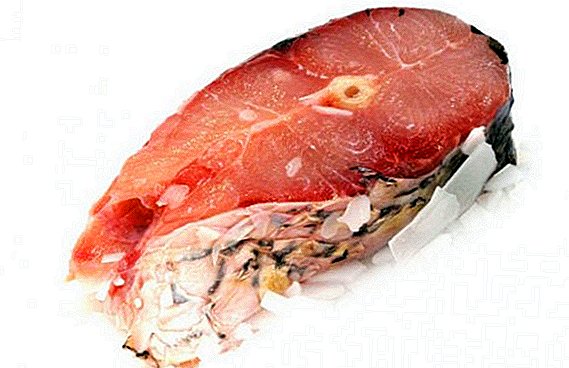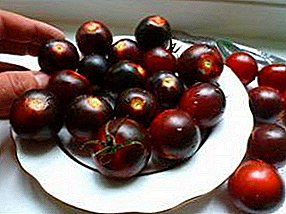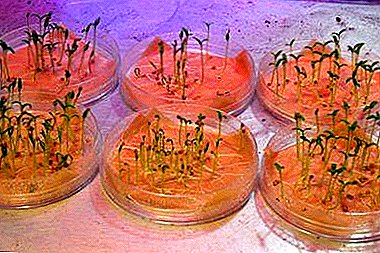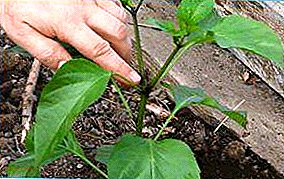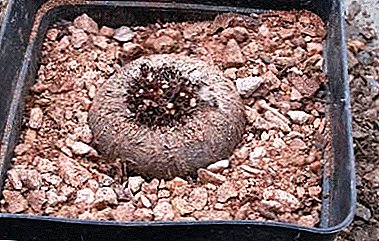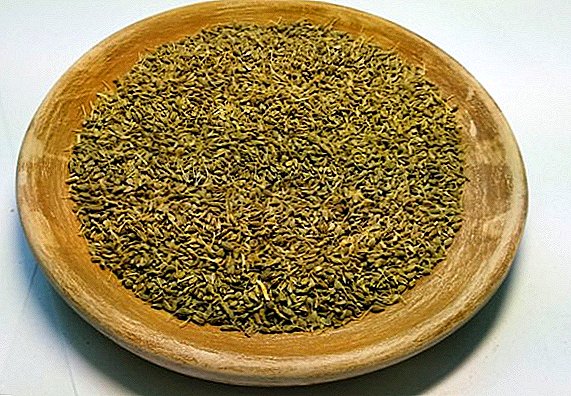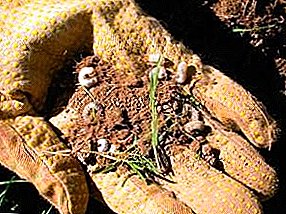
We have previously considered the question of where all possible methods and measures for dealing with the larvae of the May Beetle were studied.
Of no less interest to gardeners and farmers is the actual problem. struggle with the may beetle itself (crunchy).
With the onset of May, these insects flooded forests and gardenseating young foliage of fruit trees, berry and flower bushes.
Most often, the need to get rid of the cockchafer arises not because of the lumps themselves, but because of the larvae they lay more voracious creatures. How to get rid of the cockchafer on the site? Methods of struggle may vary depending on plantation typeto be protected from the pest, the number of individuals found, the type of crop that the insect attacked, etc.
Cockchafer: how to fight?
In the garden
 How to act if the cockchafer wound up on the garden? First of all it is necessary to protect from the encroachment on the garden deciduous trees (birch, sea buckthorn, plum, apple, cherry) and bushes (strawberries, lilacs, currants, etc.).
How to act if the cockchafer wound up on the garden? First of all it is necessary to protect from the encroachment on the garden deciduous trees (birch, sea buckthorn, plum, apple, cherry) and bushes (strawberries, lilacs, currants, etc.).
In the mornings and in the evening, beetles gather in the vegetation for a meal, most often the weather calm and cool.
It is during this period that you can check all the trees and bushes, shaking to the ground uninvited guests.
Use when the activity of the beetles is practically at zero, wide sheets of film and long poles for more convenient pest collection. Found insects can be used as bait for fish or poultry feed. Otherwise, they are better. trample or burn.
How to deal with the May beetle in the garden? There are plants whose fragrance or substances secreted by the stems and roots cause insects persistent hostility. For the May beetles it is mustard, marigold, beans, turnips, elder, lupine, white clover and various varieties of cabbage.
If you plant any of these plants in a garden near trees or bushes that are attractive to the pest, the Maybug unlikely to settle on your site.
To prevent the beetles from laying eggs in your garden, disperse various obstacles on the ground. These can be walnut shells, hard wood bark, eggshells, shavings or straw. Thanks to such a protective layer of mulch, beetles will not be able to easily and quickly penetrate the ground, and most likely will go in search of more successful places for future offspring.
From folk remedies can help onion solutionwhich periodically watered the soil in the places of occurrence of pests. On a bucket of water you will need up to 1/3 of onion peel. The solution will be ready for use after 4-5 days. Then it can be diluted with water again. The plants themselves need to be watered with a solution - only land.
In strawberry
 How to get rid of the May beetle on strawberries? Especially for scaring the may-beetle make up and sprayed with various solutions plantations of berries like strawberries, raspberries and strawberries.
How to get rid of the May beetle on strawberries? Especially for scaring the may-beetle make up and sprayed with various solutions plantations of berries like strawberries, raspberries and strawberries.
At 10 liters. water will need to dissolve 1-3 tablespoons of liquid ammonia or 15 drops of iodine per 10 liters.
Optimal spraying garden bushes 2-3 times with an interval of a week. The weather should be warm and not rainy.
Methods of struggle
How to destroy the May beetle? The fight with the May beetle and its larvae should be complex.
Bait
This method will become a diversion for the Khrushchev, preventing them from not only eating the leaves of the trees, but also landing on the ground in the garden to lay eggs. For this quite fit big plastic bottles (2-4 liters), which are attached to a tree branch with ropes or a strong cord, preferably closer to the trunk, so that the branch does not accidentally break off.
Carefully trim the top of the bottle, where the throat begins, so that the Maybirds can freely fall inside. Each capacity must be 1/4 or 1/3 full drink bait.
The next day, remove the container and remove the caught beetles (one can accumulate up to 20 pieces) change bait and hang it in the trees again. So that the beetles probably could not get out of the bottle, smear the inner edges with a thick cream or cut the cloves-pegs, bending them inward, towards the bottom.
How to make a syrup bait - photo:

For females can be arranged longevity baitby distributing in several places in the garden a handful of compost or manure. Beetles will identify these sectors as the most favorable for future offspring, and lay eggs beneath the ground near them.
Traps
First and the easiest kind of trap for Khrushchev does not require special costs. It is enough to hang a lantern near the wall, and at the bottom bucket of water and kerosene. Attracted by a bright light, the May beetles will strike against an obstacle and subsequently die in a bucket or basin of liquid.
The second method is more effective and cunning. As a deep tank you can take three-liter jar, and in the throat to place a plastic or metal funnel with a wide tip (so that the beetles freely fell to the bottom of the container). Above the trap is suspended bright light bulb. With the onset of the morning from the banks you can already get a good catch of May beetles.
Another most economical type of trapping is combination of the first method and glue. In a bucket or other container with high wide walls is placed Light source (you can make a hole in the base of the old bucket and attach a lamp there, excluding the gaps and gaps for the escape of beetles), and the edges of the container are smeared with 4-8 cm thick layer cream, grease or special glue against insects. Getting to the bottom of the bucket, May beetles simply can not get out because of the slippery and high walls.
Light trap option - photo:

If there is no wall in your area about any insects attracted by light, then stretch them upright between trees thick white fabric. Any veil or old sheet will do. Directing a beam of light on the canvas, you will attract a smaller number of insects.
Avoid following such innovative advice as laying out adhesive films on the ground near light or beer baits. With the onset of sunrise, you risk finding innocent people there pets or hedgehogscaught in a sticky trap.
Manually
One of the most durable and tedious ways - extirpation of not yet mature larvae. Digging the ground between the rows of garden plantings of 10-40 cm will make it possible to find larvae of Khrushchev deep under the ground, which spoil the potato tubers or gnaw the roots of other plants. All pests can not be overfished, but partially reduce the population, increasing the chances of saving the crop.
Natural enemies
The most ecological and safe method is to run to the site. natural predators, in whose diet the cockchafer is included. Among them hedgehogs, moles and birds. Gardeners told of cases when their pets (cats and dogs) caught insects from sports interest right on the fly and brought them to their owners.
To attract starlings, thrushes and other birds you can install a water bowl and a swimsuitand hang on nearby trees and pillars nesting boxes. Regular feeding will make the birds understand that there are delicious insects in your garden, but it can create another problem. Once you get rid of the crunchy, you have to look for ways to protect the seeds and berries from feathered rescuers.
Chemicals
 Against the beetles, intestinal-contact means "Aktara" and "Confidor" are effective.
Against the beetles, intestinal-contact means "Aktara" and "Confidor" are effective.
They are introduced into the soil in the form of a solution diluted with water, then penetrate into the plants, already from there, getting into the body of voracious crunches with eaten leaves and stems, block the food centers after several hours.
In a day or two the insects are just die of hunger. You can learn more about the means of fighting the cockchafer and its larvae from our article.
Results
Depending on the methods of struggle to which you are accustomed, on the size of the garden plot and the available finances, you can use against folk traditional means, and modern - using chemical preparations.
Most profitable and efficient the solution will be a combination of several ways. Do not underestimate the power of elementary light traps and the natural enemies of Khrushchev.
the main thing timely breed adults May beetle from its territory, so that in the next seasons you do not have to start a fight with their larvae.


